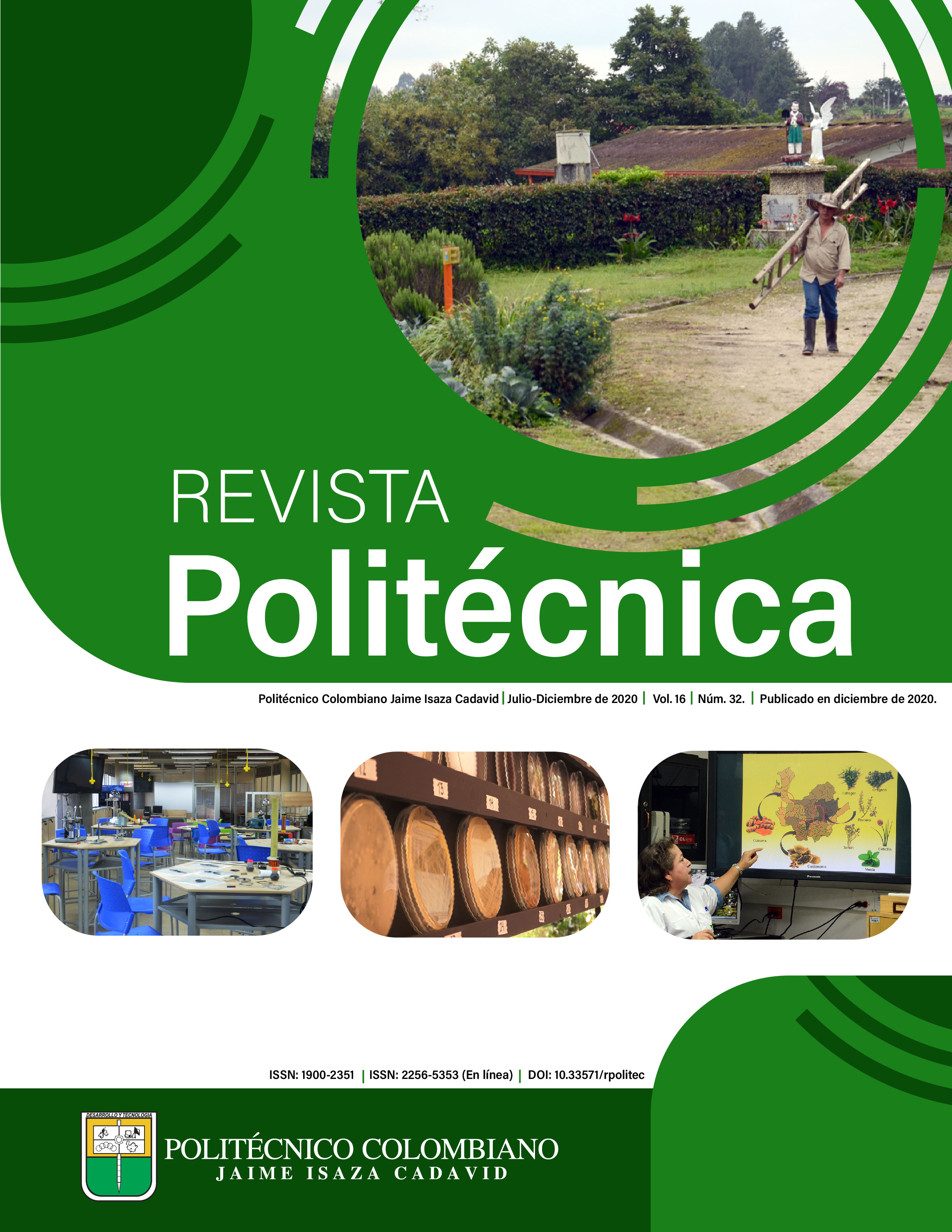Mantenimiento y reparación de vías usando un sistema robótico en la nube
DOI:
https://doi.org/10.33571/rpolitec.v16n32a8Palabras clave:
Arquitectura Orientada al Servicio (SOA), WS-BPEL, XML, Composición de Servicios Web, Servicios Web, Computación en la NubeResumen
La revolución del internet de las cosas - IoT, genera nuevos retos para el campo de la robótica; Para la construcción de las aplicaciones y comunicación de los sistemas robóticos, con la nube, fueron creados protocolos y conceptos, que facilitan y estandarizan la interconexión, algunos de estos conceptos son: servicios web, programación XML, sistema WS-BPEL, Arquitectura Orientada Servicio, Big data y computación en la nube. Este artículo, muestra una aplicación específica de la integración del concepto de IoT con la robótica, representado por un sistema de reparación y mantenimiento de vías autónomo, con un sistema robótico en la nube, el cual utiliza servicios web y protocolos de comunicación como XML y BPEL para la interconexión entre la información necesaria para la reparación y mantenimiento de las vías, usados en la toma de decisiones y tareas asignadas entre los robots. De esta manera, se demuestra, cómo es posible articular todos los conceptos, para lograr soluciones en un escenario real de reparación de vías.
Abstract, the revolution in the Internet of Things (IoT), creates new challenges for the field of robotics. For the construction of applications and communication of robotic systems with the cloud, certain protocols and concepts were created which facilitate and standardize this interconnection process. This article shows a specific application of the integration of the IoT concept with robotics, represented as an autonomous path repair and maintenance system with a robotic system in the cloud, which uses web services and communication protocols such as XML and BPEL to The interconnection between the information necessary for the repair and maintenance of the roads, decision making and tasks assigned between robots. In this way, it is demonstrated how it is possible to articulate all the concepts to achieve solutions in a real road repair scenario.
Métricas de artículo
Resumen: 896 PDF: 383 HTML: 177Métricas PlumX
Citas
Armagno, G., Benavides, F., & Rostagnol, C. (2007). Descripción de la arquitectura del sistema. Instituto de la Computación, Facultad de Ingeniería Universidad de la República. Montevideo, Uruguay.
Bonnin-Pascual F., Ortiz A. (2019). On the use of robots and vision technologies for the inspection of vessels: A survey on recent advances. Ocean Engineering, Volume 190, 15 October 2019, 106420. Doi: 10.1016/j.oceaneng.2019.106420
Dey N., Hassanien A., Bhatt C., Ashour A., Chandra S. (2018). Internet of Things and Big Data Analytics Toward Next-Generation Intelligence. Springer, 2018. https://doi.org/10.1007/978-3-319-60435-0
Fakhar S., Khaim R., Humayun M., Jhanjhi N.K., Alamri† M. (2019). SOA Issues and their Solutions through Knowledge Based Techniques – A Review. IJCSNS International Journal of Computer Science and Network Security, VOL.19 No.1, January 2019
Firouzi F., Farahani B. (2020) Architecting IoT Cloud. In: Firouzi F., Chakrabarty K., Nassif S. (eds) Intelligent Internet of Things. Springer, Cham. 22 January 2020. Doi: 10.1007/978-3-030-30367-9_4
Gerasimov N. (2019). New approach to typified microservice composition and discovery. Journal of Automation Mobile Robotics and Intelligent Systems 2019 | Vol. 13, No. 1 | 79—83. Doi: 10.14313/JAMRIS_1-2019/10
Gubbia J., Buyyab R., Marusica S., Palaniswamia M. (2012). Internet of Things (IoT): A vision, architectural elements, and future directions. Future Generation Computer Systems. Volume 29, Issue 7, September 2013, Elsevier. Pages 1645-1660. Doi: 10.1016/j.future.2013.01.010
Helmert M. (2008). Concise finite-domain representations for PDDL planning tasks. Artificial Intelligence 173 (2008) 503–535. Elsevier. doi:10.1016/j.artint.2008.10.013
Jiménez, S., Fernández, F. & Borrajo, D. (2012). Integrating Planning, Execution, and Learning to Improve Plan Execution. Computational Intelligence, 29(1), 1-36. Doi: 10.1111/j.1467-8640.2012.00447.x
LEGO, Group (2015). 31313 MINDSTORMS EV3 - Products - Mindstorms LEGO.com. Lego.com. Recuperado de: https://www.lego.com/es-ar/themes/mindstorms
Muller H., Klashinsky K. (1998). Rigi-A system for programming-in-the-large. ICSE '88: Proceedings of the 10th international conference on Software engineering. April 1988. Doi: 10.5555/55823.55832
Niknejad N., Hussin A.R.C., Amiri I.S. (2019) Literature Review of Service-Oriented Architecture (SOA) Adoption Researches and the Related Significant Factors. In: The Impact of Service Oriented Architecture Adoption on Organizations. SpringerBriefs in Electrical and Computer Engineering. Springer, Cham
OASIS.(2018). IBM (2018). Web Services Business Process Execution Language (WSBPEL) TC. Extraído de https://www.oasis-open.org/committees/tc_home.php?wg_abbrev=wsbpel. consulta: 10/04/20.
Quinn, B E. (1983). Problems encountered in using vehicle ride as a criterion of pavement roughness. Transportation Research Record, Issue Number: 946. Publisher: Transportation Research Board. URL: http://onlinepubs.trb.org/Onlinepubs/trr/1983/946/946-001.pdf
Sarkar M., Pradhan P. & Ghose D. (2019). Planning Robot Motion using Deep Visual Prediction. 7th ICAPS Workshop on Planning and Robotics (PlanRob), 2019. 24 de june of 2019. Recuperado de: https://arxiv.org/abs/1906.10182
Vega Romero, J. (2006). Definición de estrategias de robots jugadores de fútbol a través de XML. (Tesis de maestría). Instituto tecnológico y de estudios superiores de Monterrey, Monterrey. México.
Yang L., Fei J. L., Hackney P., Flanagan M., (2008). Job shop planning and scheduling for manufacturers with manual operations. Expert System. 30 de august, 2018. Doi: 10.1111/exsy.123



 _
_






















